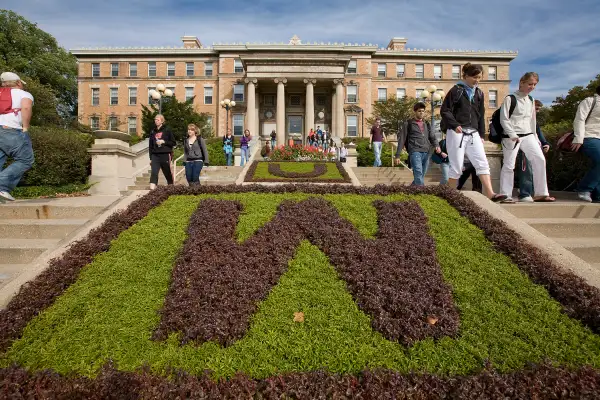10 Best Public Colleges for Out-of-Staters


For students looking to venture farther from home during their college years, an out-of-state public college could be a perfect fit. Major state universities tend to have strong national alumni networks, top-notch sports programs, and wide-ranging academic offerings. Plus, many are actively recruiting more out-of-state students, who pay a higher tuition rate than in-state residents.
Unfortunately, many nationally known flagship state universities are notoriously hard to get into for out-of-staters. (We're looking at you, University of Texas-Austin and University of Florida.) But on average, the public colleges in Money's 2015 Best Colleges ranking enrolled about 18% of their student body from beyond their state borders. At most of the colleges on this list, out-of-state enrollment is more than double that.
These are the 10 highest-ranked public colleges where at least a third of students come from out of state (not counting foreign students). You'll also see the average time it takes for graduates to earn a degree at each school, and the estimated net price of a degree for non-residents, which accounts for out-of-state tuition and fees, room and board, average financial aid per student, and estimated inflation. (For in-state costs, check out each school's profile in the Money College Planner.)
One important note: While policies vary depending on the state, non-residents generally aren't eligible for the same need-based grants as in-state students. There are other scholarships and grants available to out-of-staters, but they tend to be reserved for the best applicants and will cover only a small slice of annual tuition.
10. Colorado School of Mines
Location: Golden, Colo.
Percentage of student body from out of state: 40%
Average length to degree: 4.5 years
Estimated net price: $171,144
Money Best College rank: 134
Read more about Colorado School of Mines.
9. Clemson University
Location: Clemson, S.C.
Percentage of student body from out of state: 38%
Average time to earn a degree: 4.3 years
Estimated net price of a degree: $171,144
Money Best Colleges rank: 123
Read more about Clemson.
8. University of Wisconsin-Madison
Location: Madison, Wisc.
Percentage of student body from out of state: 33%
Average time to earn a degree: 4.4 years
Estimated net price of a degree: $151,436
Money Best Colleges rank: 116
Read more about UW-Madison.
7. University of New Hampshire
Location: Durham, NH
Percentage of student body from out of state: 56%
Average time to earn a degree: 4.2 years
Estimated net price of a degree: $142,877
Money Best Colleges rank: 116
Read more about UNH.
6. The Citadel
Location: Charleston, S.C.
Percentage of student body from out of state: 46%
Average time to earn a degree: 4.2 years
Estimated net price of a degree: $124,314
Money Best Colleges rank: 67
Read more about The Citadel.
5. University of Delaware
Location: Newark, Del.
Percentage of student body from out of state: 57%
Average time to earn a degree: 4.2 years
Estimated net price of a degree: $156,908
Money Best Colleges rank: 65
Read more about Delaware.
4. Virginia Military Institute
Location: Lexington, Va.
Percentage of student body from out of state: 46%
Average time to earn a degree: 4.3
Estimated net price of a degree: $159,799
Money Best Colleges rank: 48
Read more about VMI.
3. University of North Carolina School of the Arts
Location: Winston-Salem, N.C.
Percentage of student body from out of state: 55%
Average time to earn a degree: 4.0 years
Estimated net price of a degree: $132,126
Money Best Colleges rank: 38
Read more about UNCSCA.
2. Georgia Institute of Technology
Location: Atlanta
Percentage of student body from out of state: 33%
Average time to earn a degree: 4.6
Estimated net price of a degree: $160,351
Money Best Colleges rank: 30
Read more about Georgia Tech.
1. University of Michigan
Location: Ann Arbor, Mich.
Percentage of student body from out of state: 36%
Average length to degree: 4.2 years
Estimated net price: $186,947
Money Best College rank: 18
Read more about Michigan.

